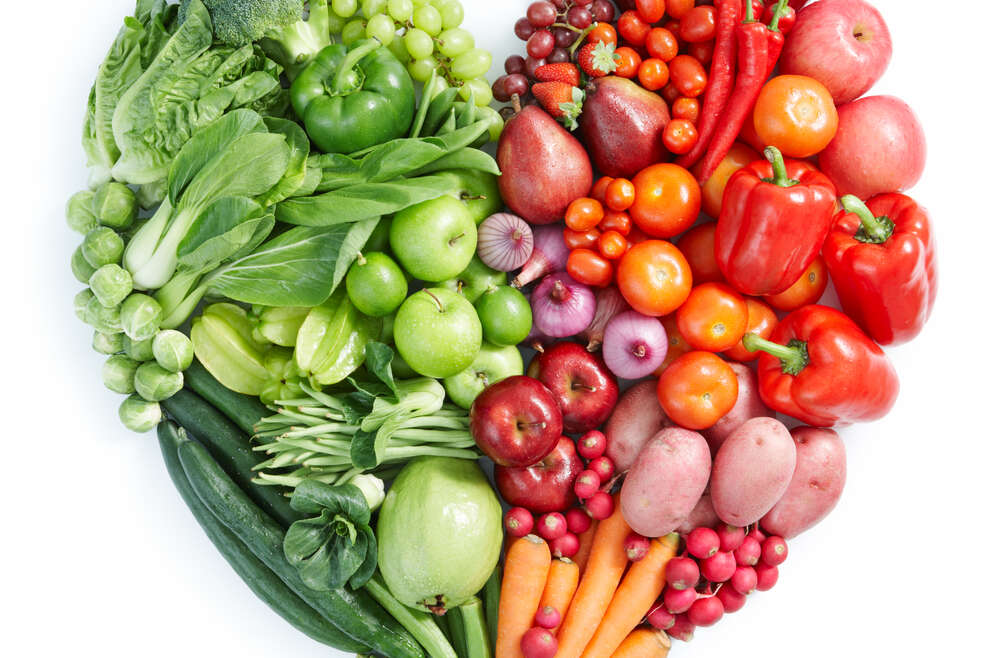It’s Healthy Eating Week, and with understandable concerns around COVID, it seems the right time to provide information on the immune system and explain exactly why good diet is so vital to our health . Everyone understands we should eat more fruits and vegetables, but we’re never told exactly why this is so important.
Many people don’t realise that 70% of the immune system is in the gut. Its role there is to protect us from any pathogens that might make it into our system as we eat or drink. This part of the immune system is, in large part, created and affected by the millions of bacteria that reside in our gut. Everything we eat makes a difference to the delicate balance of our gut bacteria which directly affects our health.
Gut Bacteria
So what does our gut bacteria like to eat? Well, the answer is easy. They like to eat fibre, fibre, and more fibre. A diet high in processed foods is extremely low in fibre (and high in bacteria-damaging inflammatory fats, sugars and salt). However, a diet rich in fresh plant foods such as fruits, vegetables, nuts, seeds, beans and lentils is rich in the fibre that help feed and strengthen the gut microbiome. It’s important that our fibre is in the form of fresh fruits, vegetables and other plant foods (not just a pure fibre product like All Bran) because the rich colours of these foods also have an important role in helping support our immunity. These colours are known as polyphenols, which are another crucial factor in helping to stave off disease.
Spice it Up!
The flavours and spices added to our food also help support the immune system because they help to lower inflammation – so add in plenty of garlic, ginger, turmeric, cinnamon, cardomom, and herbs such as rosemary, thyme and oregano. (Onions and leeks are also great!)
Nutrients
Certain nutrients are particularly important for our immune systems. These include vitamin A, B6, B12, C and D, folate, copper, iron, magnesium, selenium, and zinc. It’s important to eat a wide variety of foods to ensure we get a rich balance of all these different vitamins and minerals.
An easy way to make your diet healthier is to add some healthy plant foods to every meal. For breakfast, try a green smoothie, a homemade muesli, or a bowl of porridge with banana, blueberries and nuts and seeds on top. For snacks, try a different piece of fruit each day with a few brazil (or other) nuts, a couple of protein balls, or maybe some crudités with hummus or guacamole. For lunch, a soup made with mixed vegetables, beans or lentils, or how about a falafel and chutney flatbread with a handful of rocket? And for your evening meal, replace any refined carbohydrates with some wholegrains (brown rice, quinoa, bulgar wheat, wholewheat pasta) or some healthy starchy carbohydrates (sweet potatoes, white potatoes with the skin, parsnips, carrots, butternut squash) to go with your spaghetti sauce, stir fry, curry, or chilli. If you struggle to eat as many vegetables as you should, chop up a large bowl of salad once or twice a week, and add a handful each night to your evening meal.
How Much
So how many portions of fruits and vegetables should we be eating? The government recommends five portions of fruit and vegetables a day, but I personally think of this as a minimum (most people don’t even manage two or three). Ideally you should be looking at 7-10 per day, with a portion being the amount that fits into the palm of your cupped hand (for example, 2 broccoli spears or 3 tablespoons of peas.)
Healthy eating can take a little more thought, but think of it as an insurance policy for your health. It can also gives you a little peace of mind against the worries of contracting Covid-19, as underlying health conditions and obesity can exacerbate virus symptoms, and a consistently healthy diet may help to prevent or improve these health issues, and have a positive impact on your immune system.
Beginner Breakfast Green Smoothie (serves 1-2)
Ingredients
- 1 ½ cups unsweetened plant milk (almond, soy, cashew, coconut) or just water, if preferred.
- 2 cups spinach frozen
- 1 medium banana frozen
- 1 cup fruit of choice (mango or berries are good)
Method
- Put ingredients into a blender in the order listed.
- Start blending on low speed and increase to high.
- Blend on high speed for 50-60 seconds until mixture is smooth.
- Pour into glasses and enjoy!
Easy Guacamole with Crudites (serves 2)
Ingredients
- 1 large avocado
- 1/2 tsp dried cumin
- 1/2 tsp smoked paprika
- 1/2 tsp dried oregano
- Pinch cayenne pepper
- 1/4 lime (juice only)
- Pinch salt
Serve with celery stalks/carrot stick crudités
Method
- Halve the avocado, remove the stone and scoop out the flesh.
- Mash the flesh with the seasonings and lime.
- Serve and enjoy with the crudites
Sweet Potato, Lentil and Coconut Curry (Serves 4)
Ingredients
- 2 large sweet potatoes
- A handful of fresh coriander
- 2 large cans of coconut milk
- 2 large cans of tinned tomatoes
- 1tbsp turmeric
- 1tbsp cumin
- 1 tbsp ground ginger
- 500g red lentils
- Salt and pepper to taste
- Juice of 1 lemon
Method
- Preheat the oven to 180C/350F/Gas mark 4
- Cut the sweet potatoes into bite-sized cubes and finely chop the coriander.
- Place the coconut milk, tomatoes, turmeric, cumin and ground ginger in a large saucepan.
- All the ingredients to heat until they begin to bubble.
- Add sweet potatoes, lentils and coriander, plus salt and pepper.
- Place in an oven proof dish with lid and place in the oven for about an hour.
- You may need to stir half way through cooking time.
- Squeeze in the lemon juice and serve.

